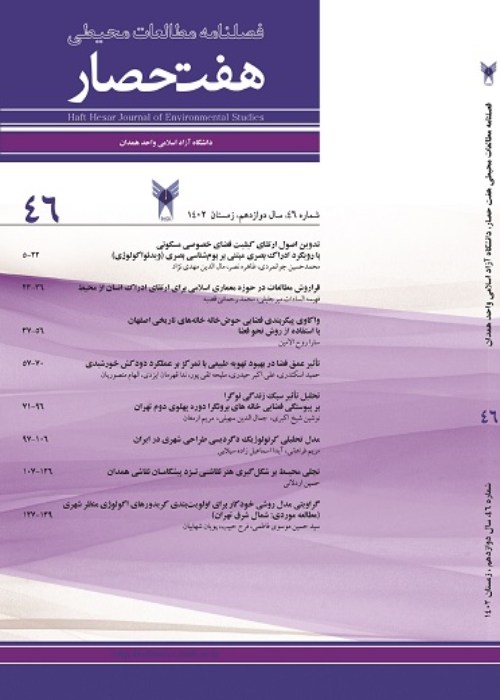Intertextual explanation of the architecture of contemporary commercial complexes in Iran (1981-2021)
Commercial complexes have grown significantly in big cities of Iran, in the last decade and are important for various reasons such as large scale and wide range of visitors. As there are interactions between globalization and regionalism, some viewpoints on the critique of the design of commercial complexes and malls, due to technological advances and the conditions of globalization, make these centers similar and repetitive elements in the world and promoters of consumerism. While some other viewpoints, for reasons such as branding strategies and the economic growth of these centers, emphasize a unique and context-dependent identity. The purpose of this study is to explain the intertextuality of the architecture of commercial complexes by reading the relationship between the architectural works of this field and its contemporary or earlier works in Iran and the West. This study also seeks to find out the types and dimensions of the use of intertextuality in the architecture of contemporary commercial complexes.
The methodology is based on Saunders Research Onion. The research philosophy of the present study is interpretive epistemology, the research approach is a qualitative, and the research strategy is content analysis. It is also explanatory in terms of the type of results. Data gathering was done by document- library information and field survey, and the method of data analysis is descriptive and inductive analysis. The samples studied in this study are a selection of contemporary commercial complexes in Iran.
The results show that in the intertextual reading of architectural works, the continuity of texts with each other and the effects of interaction and confrontations between globalization and regionalism are evident. The intertextual levels can be classified into "strong/weak" and "explicit/implicit" and the Hypertextualite "imitation/change". The results also show that the use of intertextuality in the architectural form of commercial complexes and malls in Iran is in the form of historical, geographical, and cultural representations and imitations or adaptations of the works of prominent Western architects. From a semiotic point of view, by considering commercial complexes and malls as controlled cities, one can observe the growth of collages of Simulacrum that are a reproduction of other spaces and a manifestation of the use of intertextuality in these centers.
The analysis of the selected examples in this research makes it clear that the most important influential sources in the design of commercial complexes are the two fields of "historical and cultural background of Iranian architecture" and "contemporary Western architecture". Also, the way texts are related in the architectural design of commercial complexes can be classified into three main areas: "representation", "palimpsest " and "collage of simulacrum" and includes a range of historical, geographical representations, popular fashions, and diverse styles of western architecture. Depending on the type of design of each example (commercial complex), the intertextual levels of the works can be analyzed into weak/strong, explicit/implicit, and imitation/change types.
- حق عضویت دریافتی صرف حمایت از نشریات عضو و نگهداری، تکمیل و توسعه مگیران میشود.
- پرداخت حق اشتراک و دانلود مقالات اجازه بازنشر آن در سایر رسانههای چاپی و دیجیتال را به کاربر نمیدهد.




